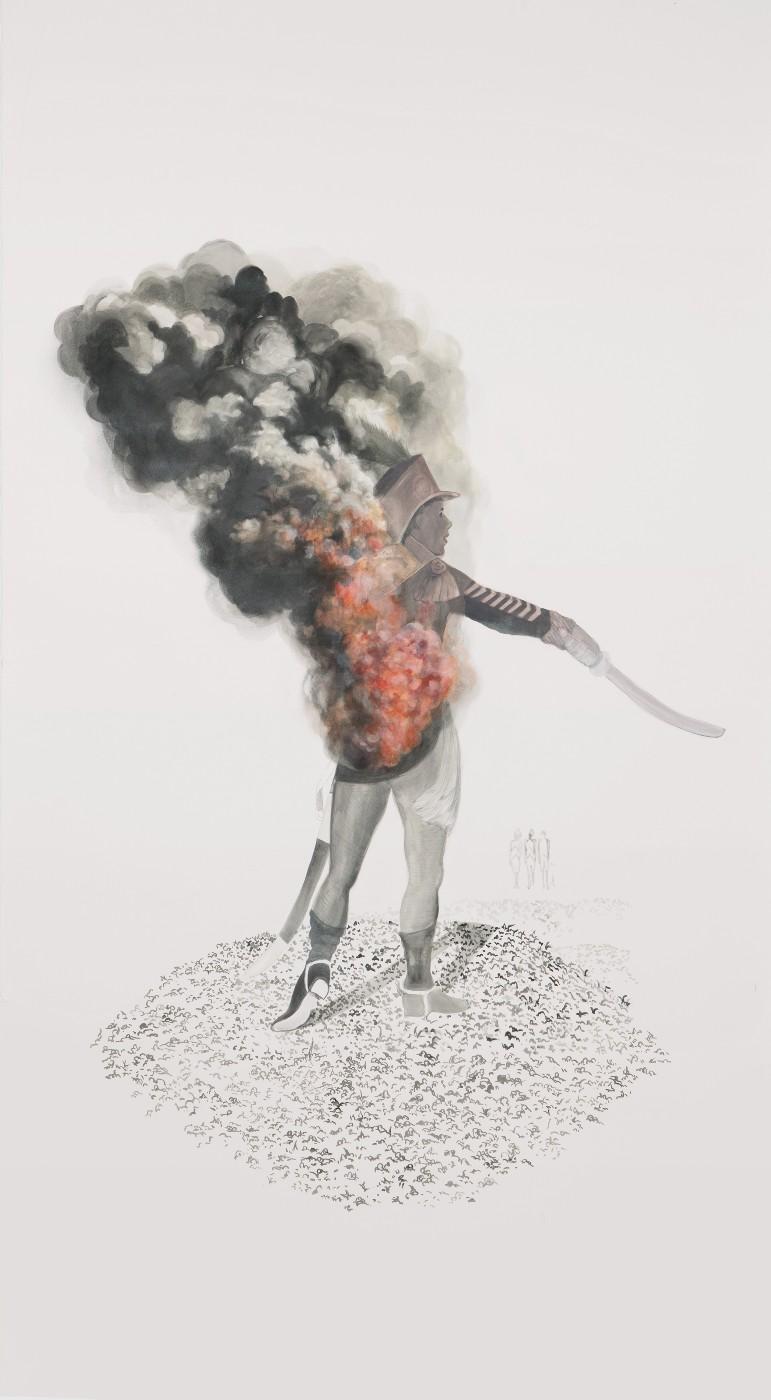The event’s head curator is Gabi Ngcobo, a South African artist who teaches at the Wits School of Arts in Johannesburg. An experienced and passionate collaborator, she recruited a team of four fellow curators whom she described at the opening press conference as “commanders”–Nomaduma Rosa Masilela, Serubiri Moses, Thiago de Paula Souza and Yvette Mutumba. After all, “we are at war,” Ngcobo said.
That sounds aggressive–and there is plenty to be angry about. In Germany, the debate about post-colonialism is only just beginning, and it has particular resonance given the huge influx of refugees from war-torn, poverty-stricken countries in the Middle East and Africa in recent years. Culture Minister Monika Grütters has conceded that Germany’s colonial past has been a “blind spot” for far too long.
Yet the Biennale itself is not aggressive. Ngcobo said she wanted it to be “political without being didactic,” and it is poetic, subtle and somewhat elusive–partly because Ngcobo has deliberately chosen to define it by what it is not, rather than what it is. The events program, starting in July, is titled “I’m not who you think I’m not.” The slogan for the whole event is “we don’t need another hero,” borrowed from Tina Turner.
Ngcobo elaborated on the reasoning for that to journalists. “Yesterday’s hero can become today’s tyrant,” she said. As an example of hero-toppling, she told the story of a statue of Cecil John Rhodes, a British imperialist, that was spectacularly removed from the campus of Cape Town University after students protested against it in 2015. The empty plinth on which Rhodes stood for 80 years is where Ngcobo sees the starting point for the Biennale–a site of destruction “that carves a space from which we can recover”–or to quote Tina Turner’s song, “Out of the ruins, out from the wreckage/Can’t make the same mistakes this time.”
The devastation is in evidence at the KW Institute, where Dineo Seshee Bopape’s installation takes over the main hall. Visitors can pick their way through broken bricks, torn-off metal pipes with protruding tangled cables, and buckets catching drips of water. Makeshift benches allow you to survey the damage, all lit in apocalyptic orange. Screens among the rubble show videos–one displays Nina Simone singing “Feelings,” while another plays scenes from a park on the outskirts of Paris. Bopape invited three other artists to contribute to her work, and at first glance, it looks as if Jabu Arnell’s giant ball suspended from the ceiling might be responsible for the wreckage. But “Discoball X” is made of cardboard hastily stuck together with tape–hardly materials capable of destroying bricks and mortar.






![Dineo Sheshee Bopape, "Untitled (Of Occult Instability) [Feelings]," 2016–18](/sites/default/files/styles/media_crop/public/bb10-dineo-seshee-bopape_02.jpg?itok=7xcOluVW)
![Dineo Sheshee Bopape, "Untitled (Of Occult Instability) [Feelings]," 2016–18](/sites/default/files/styles/media_crop/public/bb10-dineo-sheshee-bopape_04%20-%20Edited_0.jpg?itok=zruZDYWg)
![Dineo Sheshee Bopape, "Untitled (Of Occult Instability) [Feelings]," 2016–18](/sites/default/files/styles/media_crop/public/bb10-dineo-seshee-bopape_03.jpg?itok=EV5gwWgQ)




















![DEl Kathryn Barton [Australian b. 1972] the more than human love , 2025 Acrylic on French linen 78 3/4 x 137 3/4 inches 200 x 350 cm Framed dimensions: 79 7/8 x 139 inches 203 x 353 cm](/sites/default/files/styles/image_5_column/public/ab15211bartonthe-more-human-lovelg.jpg?itok=wW_Qrve3)



